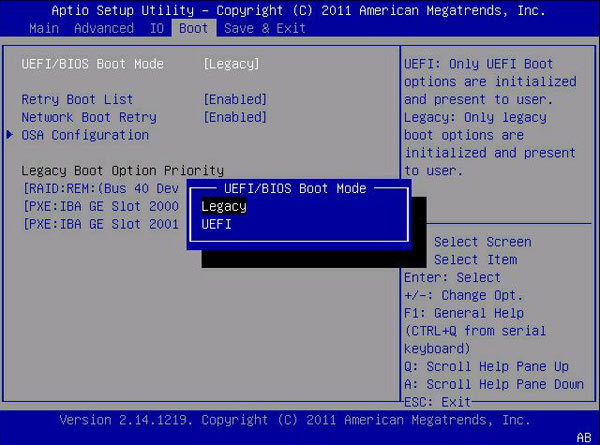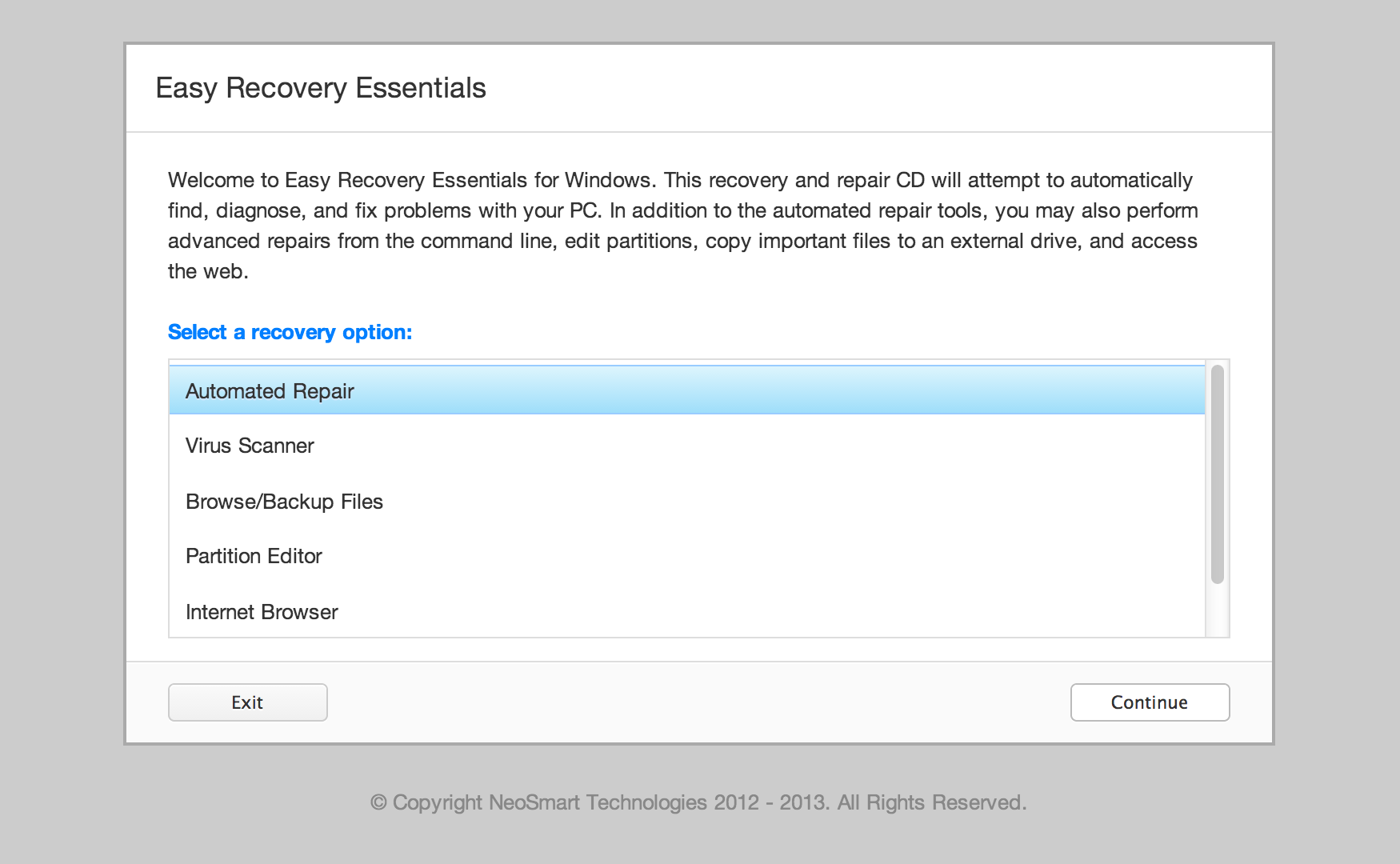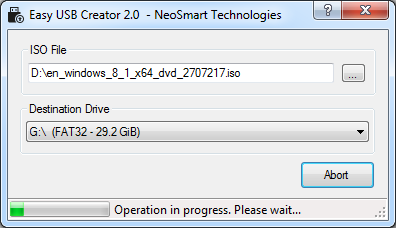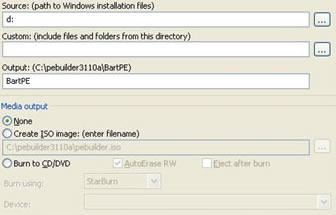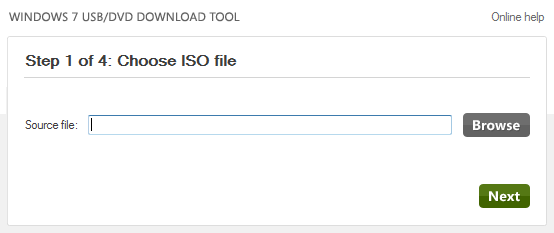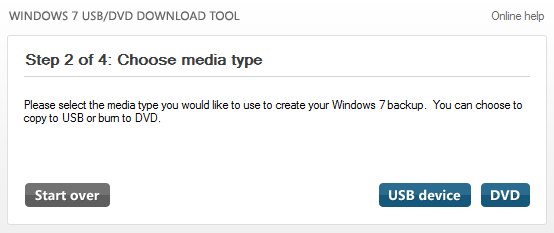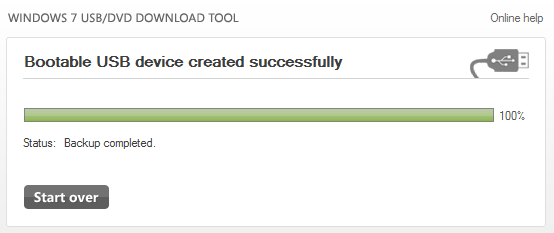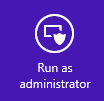- Windows USB/DVD Download Tool
- Overview
- Installation
- Using the Windows USB/DVD Download Tool
- Frequently Asked Questions
- Troubleshooting
- How to install any version of Windows from one USB flash drive
- Install any version of Windows from one USB flash drive
- Install multiple Windows versions using WinSetupFromUSB
- Bootable Windows USB Drive: Guide for Windows XP, Vista, 7, 8, 8.1, 10
- Prerequisites
- USB Drive
- BIOS/UEFI configuration
- ISO image
- Create a Windows XP bootable USB
- Using Easy USB Creator 2.0
- If you have the installation disc (CD)
- Create a Windows Vista bootable USB
- If you have the ISO image
- Using Easy USB Creator 2.0
- Using Windows 7 USB/DVD Download Tool
- If you have the installation disc (DVD)
- Create a Windows 7 bootable USB
- If you have the ISO image
- Using Easy USB Creator 2.0
- Using Windows 7 USB/DVD Download Tool
- If you have the installation disc (DVD)
- Create a Windows 8 / 8.1 bootable USB
- If you have the ISO image
- Using Easy USB Creator 2.0
- Using Windows 7 USB/DVD Download Tool
- If you have the installation disc (DVD)
- Create a Windows 10 bootable USB
- If you have the ISO image
- Using Easy USB Creator 2.0
- Using Windows 7 USB/DVD Download Tool
- If you have the installation disc (DVD)
- Troubleshooting
- Setup cannot find the End User Licensing Agreement (EULA)
- Download Windows 7 USB/DVD Download Tool
- Bootable USB will not boot
- More Information
- Support Links
- Applicable Systems
Windows USB/DVD Download Tool
Overview
When you download Windows from Microsoft Store, you have two options: You can download a collection of compressed files, or you can download an ISO file. An ISO file combines all the Windows installation files into a single uncompressed file.
If you choose to download an ISO file so you can create a bootable file from a DVD or USB drive, copy the Windows ISO file onto your drive and then run the Windows USB/DVD Download Tool. Then simply install Windows onto your computer directly from your USB or DVD drive.
When you download the ISO file, you must copy it onto a USB or DVD. When you’re ready to install Windows, insert the USB drive or DVD with the ISO file on it and then run Setup.exe from the root folder on the drive.
This allows you to install Windows onto your machine without having to first run an existing operating system. If you change the boot order of drives in your computer’s BIOS, you can run the Windows installation directly from your USB drive or DVD when you first turn on your computer. Please see the documentation for your computer for information about how to change the BIOS boot order of drives.
Making copies
To install the software, you can make one copy of the ISO file on a disc, USB flash drive, or other media.
After you’ve installed the software and accepted the license terms that accompany the software, those license terms apply to your use of the software. The license terms for Windows permit you to make one copy of the software as a back-up copy for re-installation on the licensed computer. If you do not delete your copy of the ISO file after installing the Windows software, the copy of the ISO file counts as your one back-up copy.
If you need to download the software again, you can go to your Download Purchase History in your Microsoft Store account and access the download there.
Installation
To install the Windows USB/DVD Download Tool:
2. Click Download then Run.
3. Follow the steps in the setup dialogs. You’ll have the option to specify where to install the Windows USB/DVD Download Tool.
You must be an administrator on the computer on which you are installing the Windows USB/DVD Download tool. It requires the Microsoft .NET Framework version 2.0 or higher.
System requirements
Windows XP SP2, Windows Vista, or Windows 7 (32-bit or 64-bit)
Pentium 233-megahertz (MHz) processor or faster (300MHz is recommended)
50MB of free space on your hard drive
DVD-R drive or 4GB removable USB drive
For Windows XP users
The following applications must be installed prior to installing the tool:
Microsoft .NET Framework 2.0 must be installed. It can be downloaded here.
Microsoft Image Mastering API v2 must be installed. It can be downloaded here.
Using the Windows USB/DVD Download Tool
Before you run the Download Tool, make sure you have purchased the Windows ISO download from Microsoft Store and downloaded the Windows ISO file to your drive. If you have purchased Windows but have not yet downloaded the ISO file, you can download the ISO file from your Microsoft Store Account.
To make a copy of your Windows ISO file:
1. Click the Windows START button, and click WINDOWS USB/DVD DOWNLOAD TOOL in the ALL PROGRAMS list to open the Windows USB/DVD Download Tool.
2. In the SOURCE FILE box, type the name and path of your Windows ISO file, or click BROWSE and select the file from the OPEN dialog box. Click NEXT.
3. Select USB DEVICE to create a copy on a USB flash drive or select DVD disk to create a copy on a DVD disk.
4. If you are copying the file to a USB flash drive, select your USB device in the drop-down list and click BEGIN COPYING. If you are copying the file up to a DVD, click BEGIN BURNING.
When your Windows ISO file is copied to your drive, install Windows by moving to the root folder of your DVD or USB drive, and then double-click Setup.exe.
Frequently Asked Questions
Where can I download .NET framework 2.0?
The .NET framework can be downloaded here.
Where can I download Image Mastering API 2.0?
The Image Mastering API can be downloaded here.
What size USB drive is required?
You need a USB drive with a minimum of 4GB of free space.
Can I use my newly created USB drive to install Windows on someone else’s computer?
No. The Windows ISO file on the USB drive is only intended to be used to install Windows on the licensed user’s own computer.
Can I back up to a CD-ROM?
No. The Windows ISO file is too large to fit on a CD.
Can I back up to a Blu-ray Disc?
Yes, as long as your DVD drive can write to a Blu-ray Disc.
IfI have other files on the USB drive will the Windows USB/DVD download tool delete them?
This tool requires the USB drive to be completely blank before the Windows files are copied. This helps ensure that the device is bootable after the copying has completed.
Can I backup to an external hard drive or other device with enough free disk space?
Yes, but this is not recommended. The device must be formatted in order for the device to be bootable. A dedicated USB flash drive would be a better option.
Can I use the Windows USB/DVD Download Tool to back up other files?
No. This tool is only for use with the Windows ISO file purchased from Microsoft Store.
Does the tool support dual-layer DVD discs for burning?
No. Currently, the tool does not support dual-layer DVD discs.
Troubleshooting
The tool is asking me to install the .NET framework and Image Mastering API before I install the tool
If you’re running Windows XP, you must install the .NET Framework 2.0 and the Image Mastering API 2.0 before installing the tool. You can download .NET framework here and you can download the Image Mastering API here.
A restart may be required after installing the .NET framework and the Image Mastering API.
When creating a bootable USB device, I am getting an error about bootsect
To make the USB drive bootable, you need to run a tool named bootsect.exe. In some cases, this tool needs to be downloaded from your Microsoft Store account. This may happen if you’re trying to create a 64-bit bootable USB device from a 32-bit version of Windows. To download bootsect:
1. Login to your Microsoft Store account to view your purchase history.
2. Look for your Windows purchase.
3. Next to Windows, there is an Additional download options drop-down menu.
4. In the drop-down menu, select 32-bit ISO.
5. Right-click the link, and then save the bootsect.exe file to the location where you installed the Windows USB/DVD Download Tool (e.g. C:\Users\username\AppData\Local\Apps\Windows USB DVD Download Tool).
6. Once the file has been saved, go back to the Windows USB/DVD Download Tool to create your bootable USB device.
My USB drive is not in the list of available devices
If you don’t see your USB drive in the list of available devices, please make sure the drive is inserted in the USB port, and then click the Refresh button beside the list of available drives.
I inserted a blank DVD in my DVD-ROM drive, but the Windows USB/DVD Download Tool doesn’t recognize it
If there are multiple drives on the system, the tool will select the first one that is capable of burning DVDs. If you have multiple DVD-R drives, try inserting the blank DVD into another DVD-R drive. If that doesn’t help, please make sure that your disc isn’t damaged and that your DVD-R drive is operational. Contact Product Support if issues continue to arise.
I inserted a blank DVD in my DVD-ROM drive, but the tool won’t let me burn it
Make sure the disc isn’t a dual-layer DVD disc. Currently, dual-layer discs are not supported within the tool.
How to install any version of Windows from one USB flash drive
With the advent of USB drives, our activities with CD/DVDs are also decreasing considerably. The same has happened to the process of installation of Windows. Earlier Windows setup mostly had a CD/DVD involved, but with the time we have moved to USB drives. Installing Windows from a USB is okay, but have you ever considered installing multiple versions of Windows, like say, Windows 10, Windows 8,1, and Windows 7, from the same USB drive. Well, this tutorial is here to guide you on installing any version of Windows from one USB flash drive using a tool called WinSetupFromUSB.
Install any version of Windows from one USB flash drive
Things you’ll need:
- A USB drive
- ISO files for Windows
- WinSetupFromUSB
- A working Windows PC
Step 1: Download WinSetupFromUSB from here. Extract the downloaded file and run WinSetupFromUSB as per the architecture of your system (x64 or x86).
Step 2: Plug in your USB drive and ensure that there is enough free space or you can directly format the USB drive using WinSetupFromUSB. FAT32 file system is recommended for installing Windows from USB. Choose your USB drive according to the number of setups you want to add to the USB drive. For more than two setups it is recommended to have a USB drive of 16 GBs or more.
Step 3: Open WinSetupFromUSB and head to Advanced Options, and enable Custom menu names for Vista/7/8/Server Source. This option will let you add your own custom names to Windows 7/8/10 menus.
Step 4: Select your USB drive in WinSetupFromUSB and then select the versions of Windows that you want to add to the USB drive. You can add Windows ranging from Windows 2000/XP/2003 to Windows Vista/7/8/10.
Step 5: Locate the ISO files and hit the ‘Go’ button. The entire process will take a bit of time and will display a ‘Job Done’ message at the end.
Install multiple Windows versions using WinSetupFromUSB
To add more setups, repeat the process for more ISO files. For instance, I’ve added Windows 10 and Windows 7 to the USB drive. Since it cannot be done in one go, I added Windows 10 first and then added Windows 7 after the first job was complete.
Step 6: Now remove the USB drive and plug it into the computer where you want to install Windows. Go to the boot settings of the computer and boot from your USB drive and then select the desired option from the list and you are good to go.
That is all you need to do!
In addition to Windows, you can also add Linux Distros to the same USB drive and do a lot more with WinSetupFromUSB.
Do also check out our tutorial on downloading Windows 10 ISO files.
Bootable Windows USB Drive: Guide for Windows XP, Vista, 7, 8, 8.1, 10
This guide explains how to create a Windows bootable USB drive for the following Windows versions: Windows XP, Windows Vista, Windows 7, Windows 8, Windows 8.1 and Windows 10.
Creating a bootable USB drive will allow you to install Windows from the USB drive directly.
To be able to install Windows from a USB, you need have one of the following:
- the ISO image of the Windows version
- or the original installation disc of the Windows version
Prerequisites
Before you start creating a bootable USB flash drive to install Windows (XP, Vista, 7, 8, 8.1, 10), you need to make sure that:
- The USB drive is empty and properly formatted
- The USB drive is bootable
- Your BIOS/UEFI is properly configured to boot from the USB flash drive first
- You have the ISO image of Windows XP, Vista, 7, 8 or 8.1. If you have the original Windows installation disc, you can use that instead of the ISO image.
- Software needed to write the ISO image to the USB drive or alternatives, such as Easy USB Creator 2.0 by NeoSmart or the Windows 7 USB/DVD Download Tool by Microsoft.
USB Drive
The USB drive you want to make bootable should have at least 4 GB in available size.
BIOS/UEFI configuration
To make sure that your BIOS/UEFI is configured to boot from a USB drive, follow our Boot from USB drive guide. You need to make sure that:
If a Boot Device menu doesn’t appear on your screen where the USB drive is plugged-in, check the BIOS/UEFI settings. A Boot Device menu can look like this, depending on your computer model and Windows version:
If you are using a new computer with UEFI/EFI, make sure that the Boot Legacy option is enabled:
If you’re using a computer with Fast Boot option, make sure that Fast Boot is disabled.
If your BIOS menu doesn’t list a USB item in the BIOS settings, it may mean that it can’t boot from a USB drive. You can try with the USB drive plugged-in and then boot into BIOS directly.
If the item doesn’t appear, you need to use the original Windows installation CD or DVD to install Windows or access the repair tools.
If you need to use the repair tools of an original Windows installation CD/DVD, you can also use Easy Recovery Essentials and run Automated Repair to automatically find and fix boot errors.
ISO image
If you don’t have the ISO image to create the bootable USB drive, you can download an official image from Microsoft’s website.
You need to have the product (or license) key.
Create a Windows XP bootable USB
You can create a bootable USB drive with Windows XP by following these instructions.
Using Easy USB Creator 2.0
Easy USB Creator can quickly convert the ISO images into bootable USB drives, with just a single click:
To burn Windows XP to a USB drive using Easy USB Creator 2.0, simply follow these steps:
- Download USB Creator 2.0
- Install Easy USB Creator 2.0
- Browse the Windows XP ISO Image to load at the ISO File field
- Select the destination of your USB Drive at the Destination Drive field
- Start
Easy USB Creator 2.0 supports both USB 2.0 and USB 3.0.
It’s compatible with Windows XP, Windows Vista, Windows 7, Windows 8, Windows 8.1, Windows 10 plus the Windows Server editions (2003, 2008, 2012). You must have .NET Framework 2.0 or higher in order to use Easy USB Creator 2.0
If you have the installation disc (CD)
If you have the original Microsoft Windows XP Professional installation CD, you can use the CD to create a bootable USB using PE Builder.
It’s important to have the following before you start:
- The Windows Server 2003 SP1 archive. If not, download from Microsoft now: Microsoft Windows Server 2003 Service Pack 1 (32 bit)
- The PE Builder software (BartPE). If not, download BartPE
- The original CD of Windows XP Professional, not a Windows XP Home CD.
A Windows XP Home CD will not work.
To create the bootable drive with Windows XP, follow these steps:
- Boot into the system
- Download the PE Builder software from http://www.nu2.nu/pebuilder/
- Install the PE Builder to C:\ . The final path should be C:\PEBuilder to make the next steps easier.
Inside the PEBuilder folder, create a new folder named SRSP1 . This folder’s path should be C:\PEBuilder\SRSP1 .
- Download the Windows Server 2003 SP1 archive from http://www.microsoft.com/en-us/download/details.aspx?id=1143…
- Rename the archive downloaded from Microsoft to MS-WS-SP1.exe
- Open Command Prompt. You can also open it by typing cmd in the Run dialog box and pressing Enter afterwards.
- Type the cd command to go to the folder where the MS-WS-SP1.exe file exists:
Don’t type MS-WS-SP1.exe in the path above. You only need to go to the folder where the file exists.
Replace c:\downloads with the letter of the drive and the directory where the MS-WP-SP1.exe file exists.
PEBuilder: Extract Files
If you created a new folder for the extract files, say Extract, in c:\downloads, update the cd command to go to that folder:
Then, type cd i386 , press Enter
Once inside the i386 folder via Command Prompt, type:
Replace c:\PEBuilder\ with the path where the PE Builder software is installed, if this was changed in previous steps.
While still in Command Prompt, expand the ramdisk.sys file with this command:
Replace c:\PEBuilder\ with the path where the PE Builder software is installed, if this was changed in previous steps.
PEBuilder: Check that you have the files copied
BartPE: Configuration for Windows XP USB
- At the Source field, type the letter of the drive for the Windows XP CD, e.g. e:\
- At the Output field, type BartPE
- Leave the Custom field blank
- Media output should be None
Replace d: with the letter of the drive where your USB flash drive is loaded.
If your computer doesn’t boot into the USB drive directly, go to Prerequisites > BIOS/UEFI configuration or read the Boot from USB drive guide to configure your BIOS menu to boot from a USB device first.
Create a Windows Vista bootable USB
Depending if you have the ISO image of Windows Vista or the original DVD, you can use Easy USB Creator 2.0 or the diskpart utility to create the bootable USB.
If you have the ISO image
Using Easy USB Creator 2.0
Easy USB Creator can quickly convert the ISO images into bootable USB drives, with just a single click:
To burn Windows Vista to a USB drive using Easy USB Creator 2.0, simply follow these steps:
- Download USB Creator 2.0
- Install Easy USB Creator 2.0
- Browse the Windows Vista ISO Image to load at the ISO File field
- Select the destination of your USB Drive at the Destination Drive field
- Start
Easy USB Creator 2.0 supports both USB 2.0 and USB 3.0.
It’s compatible with Windows XP, Windows Vista, Windows 7, Windows 8, Windows 8.1, Windows 10 plus the Windows Server editions (2003, 2008, 2012). You must have .NET Framework 2.0 or higher in order to use Easy USB Creator 2.0
Using Windows 7 USB/DVD Download Tool
To create the bootable drive with the Windows 7 USB/DVD Download Tool, follow the steps from Using the Windows 7 USB/DVD Download Tool from Windows 8/8.1.
While the name is “Windows 7”, you can use the tool for Windows Vista systems too.
If you have the installation disc (DVD)
To create a bootable USB with Windows Vista and install the operating system from that USB drive, follow the steps.
You’ll be using the diskpart utility, available in Windows Vista, to make the USB drive bootable. You’ll copy the files from the installation disc (DVD) to the USB drive after the diskpart utility process is finished.
The instructions are:
- Boot your computer
- Open Command Prompt and run it as Administrator.You can go at Start > All Programs Accessories > Command Prompt or type cmd in the search field.To run Command Prompt as Administrator, right-click on the Command Prompt item and select Run as Administrator.
- When Command Prompt opens, type this command and press Enter :
Replace c:\ with the letter of the driver where your Windows Vista is installed: C:\, D:\ etc.
Command Prompt: list disk
Where X is the number of the USB flash drive listed by Command Prompt.
The confirmation message should be:
It may take a few minutes to format the entire USB flash drive, depending on its size. However, you can use the quick parameter to format the drive more quickly:
Replace D: with the letter of the drive where the Windows Vista DVD is loaded
Where f: is the letter of the drive where your USB flash drive is loaded
If you followed the above instructions correctly, the USB flash drive should now be bootable with Windows Vista.
You can check this by plugging the USB and rebooting the system. To make sure that your computer boots from a USB drive first, and not from the hard disk, go to BIOS/UEFI configuration.
Create a Windows 7 bootable USB
You can create the bootable USB drive with Windows 7, if:
- you have the ISO image of Windows 7
- or you have the original installation DVD of Windows 7
If you have the ISO image
Using Easy USB Creator 2.0
Easy USB Creator can quickly convert the ISO images into bootable USB drives, with just a single click:
To burn Windows 7 to a USB drive using Easy USB Creator 2.0, simply follow these steps:
- Download USB Creator 2.0
- Install Easy USB Creator 2.0
- Browse the Windows 7 ISO Image to load at the ISO File field
- Select the destination of your USB Drive at the Destination Drive field
- Start
Easy USB Creator 2.0 supports both USB 2.0 and USB 3.0.
It’s compatible with Windows XP, Windows Vista, Windows 7, Windows 8, Windows 8.1, Windows 10 plus the Windows Server editions (2003, 2008, 2012). You must have .NET Framework 2.0 or higher in order to use Easy USB Creator 2.0
Using Windows 7 USB/DVD Download Tool
The Windows 7 USB/DVD Download Tool is available to download and you can use it to create a bootable ISO image from the ISO image you purchased and downloaded from Microsoft.
Before you continue with these instructions, please make sure that:
- You have the Windows 7 USB/DVD Download Tool downloaded. If not, download Windows 7 USB/DVD Download Tool now.
- You have the Windows 7 ISO Image ready
The instructions are:
- Download Windows 7 USB/DVD Download Tool from http://wudt.codeplex.com/ and launch it
- At the Source File field, click Browse and find the Windows 7 ISO image on your computer and load it
Windows 7 USB/DVD Download Tool: Source File
If you have the installation disc (DVD)
You can use a USB flash drive (see Prerequisites for more information) to install Windows 7 from.
To do so, you need to make the USB flash drive bootable first and then use the original Windows 7 installation disc (DVD) to copy the contents of the DVD to the USB drive.
The diskpart utility, part of Windows 7, will be used.
- Start the computer
- Open Command Prompt as Administrator. Go at Start > All Programs Accessories > right-click on the Command Prompt item and select Run as Administrator.
- Enter the password for the Administrator account
- At Command Prompt, type:
- Press Enter
- Insert the USB drive that you want to make bootable in an available port
- Type diskpart and press Enter
- Type list disk and press Enter
Command Prompt: list disk
Where X is the number of the USB drive listed by Command Prompt above.
The confirmation message should be:
- Type clean , press Enter
- Type create partition primary , press Enter
- Type select partition 1 , press Enter
- Type active , press Enter
- Type format fs=ntfs and press Enter .
Replace c:\ with the letter of the driver where your Windows 7 is installed: C:\, D:\ etc.
You can use the quick parameter to format the drive more quickly: format fs=ntfs quick
- Insert the Windows 7 DVD and go to My Computer. Note the letter of the drive where the DVD is loaded, e.g. D:\, E:\
- Type assign , press Enter
- Type exit , press Enter
- After the format process is complete, type this command in Command Prompt and press Enter :
Where d: with the letter of the drive where the Windows 7 DVD is loaded.
Where f: is the letter of the drive where the USB flash drive is loaded
Create a Windows 8 / 8.1 bootable USB
Depending if you have the ISO image of Windows Vista or the original DVD, you can use Easy USB Creator 2.0 to create the USB if you have the ISO image or the diskpart utility to create the bootable USB, if you have the DVD.
If you have the ISO image
Using Easy USB Creator 2.0
Easy USB Creator can quickly convert the ISO images into bootable USB drives, with just a single click:
To burn Windows 8 or 8.1 to a USB drive using Easy USB Creator 2.0, simply follow these steps:
- Download USB Creator 2.0
- Install Easy USB Creator 2.0
- Browse the Windows 8 or Windows 8.1 ISO Image to load at the ISO File field
- Select the destination of your USB Drive at the Destination Drive field
- Start
Easy USB Creator 2.0 supports both USB 2.0 and USB 3.0.
It’s compatible with Windows XP, Windows Vista, Windows 7, Windows 8, Windows 8.1, Windows 10 plus the Windows Server editions (2003, 2008, 2012). You must have .NET Framework 2.0 or higher in order to use Easy USB Creator 2.0
Using Windows 7 USB/DVD Download Tool
The Windows 7 USB/DVD Download Tool is available to download and you can use it to create a bootable ISO image from the ISO image you purchased and downloaded from Microsoft.
While the name is “Windows 7”, you can use this tool on a Windows 8 or 8.1 system too.
Before you continue with these instructions, please make sure that:
- You have the Windows 7 USB/DVD Download Tool downloaded. If not, download the Windows 7 USB/DVD Download Tool now.
- You have the Windows 8 or 8.1 ISO Image ready
The instructions are:
- Launch the Windows 7 USB/DVD Download Tool
- At the Source File field, click Browse and find the Windows 8 or 8.1 ISO image on your computer
Windows 7 USB/DVD Download Tool: Source File
Windows 7 USB/DVD Download Tool: Choose Media Type
Windows 7 USB/DVD Download Tool: Done
If you have the installation disc (DVD)
If you have the original installation disc (DVD) of Microsoft Windows 8 or Windows 8.1 you can create a bootable USB drive.
To do so, follow the steps below:
- Boot into Windows 8 or 8.1
- Open Command Prompt as Administrator. To do so, press the Windows and C key to search for cmd . From the search results list, right-click on Command Prompt
- Click Run as administrator
- Enter the password, when prompted
- When Command Prompt opens, type this command and press Enter :
- Insert the USB flash drive in the port
- Type list disk , press Enter
Command Prompt: list disk
Command Prompt: select disk
The confirmation message should be:
Create a Windows 10 bootable USB
If you have the ISO image
Using Easy USB Creator 2.0
Easy USB Creator can quickly convert the ISO images into bootable USB drives, with just a single click:
To burn Windows 10 to a USB drive using Easy USB Creator 2.0, simply follow these steps:
- Download USB Creator 2.0
- Install Easy USB Creator 2.0
- Browse the Windows 10 ISO Image to load at the ISO File field
- Select the destination of your USB Drive at the Destination Drive field
- Start
Easy USB Creator 2.0 supports both USB 2.0 and USB 3.0.
It’s compatible with Windows XP, Windows Vista, Windows 7, Windows 8, Windows 8.1, Windows 10 plus the Windows Server editions (2003, 2008, 2012). You must have .NET Framework 2.0 or higher in order to use Easy USB Creator 2.0
Using Windows 7 USB/DVD Download Tool
The Windows 7 USB/DVD Download Tool is available to download and you can use it to create a bootable ISO image from the ISO image you purchased and downloaded from Microsoft.
While the name is “Windows 7”, you can use this tool on a Windows 10 system too.
Before you continue with these instructions, please make sure that:
- You have the Windows 7 USB/DVD Download Tool downloaded. If not, download the Windows 7 USB/DVD Download Tool now.
- You have the Windows 10 ISO Image ready
The instructions are:
- Launch the Windows 7 USB/DVD Download Tool
- At the Source File field, click Browse and find the Windows 10 ISO image on your computer
Windows 7 USB/DVD Download Tool: Source File
Windows 7 USB/DVD Download Tool: Choose Media Type
Windows 7 USB/DVD Download Tool: Done
If you have the installation disc (DVD)
If you have the original installation disc (DVD) of Microsoft Windows 10 you can create a bootable USB drive.
To do so, follow the steps below:
- Boot into Windows 10
- Open Command Prompt as Administrator. To do so, press the Windows and C key to search for cmd . From the search results list, right-click on Command Prompt
- Click Run as administrator
- Enter the password, when prompted
- When Command Prompt opens, type this command and press Enter :
- Insert the USB flash drive in the port
- Type list disk , press Enter
Command Prompt: list disk
Command Prompt: select disk
The confirmation message should be:
Troubleshooting
Setup cannot find the End User Licensing Agreement (EULA)
You may receive this error when trying to write a Windows (XP, Vista, 7, 8, 8.1) ISO Image to a USB drive and make it bootable:
If so, the ISO image might be corrupted. In this case, you can try:
- download a new ISO image from Microsoft
- use the original installation disc instead to create the bootable drive (instructions for using the disc instead of the ISO image are available in this guide for all Windows versions)
- use Easy Recovery Essentials if you’re looking for accessing repair tools. Run EasyRE’s Automated Repair feature to automatically scan and fix various boot errors. Other features are available.
Download Windows 7 USB/DVD Download Tool
To download the Windows 7 USB/DVD Download Tool, go to http://wudt.codeplex.com/.
Bootable USB will not boot
To make sure that the USB drive will boot when starting your computer, make sure that:
- Your BIOS configuration allows USB drives to boot first and then boot from hard disk. Follow the steps from BIOS/UEFI configuration or the our Boot from USB drive guide.
If you created the bootable USB drive using the Windows 7 USB/DVD Download Tool, new computers with UEFI might not boot from the USB as it’s been formatted using NTFS and not FAT32.
To get around this, follow these steps:
- After the Windows 7 USB/DVD Download Tool successfully created the bootable USB drive, go to My Computer and copy all contents from the USB drive to a folder on your Desktop
Windows 7 USB/DVD Download Tool: Done
More Information
Support Links
It’s an easy-to-use and automated diagnostics disk. It’s available for Windows 8, Windows 7 and Windows Vista. It’s also available for Windows XP and Windows Server.
Read more at Windows Recovery Disks.
Applicable Systems
This Windows-related knowledgebase article applies to the following operating systems:
- Windows XP (all editions)
- Windows Vista (all editions)
- Windows 7 (all editions)
- Windows 8 (all editions)
- Windows 8.1 (all editions)
- Windows 10 (all editions)
- Windows Server 2003 (all editions)
- Windows Server 2008 (all editions)
- Windows Server 2012 (all editions)

